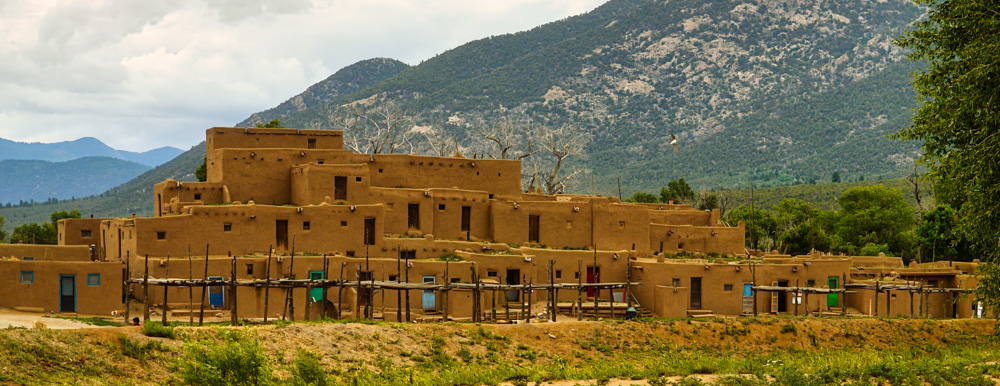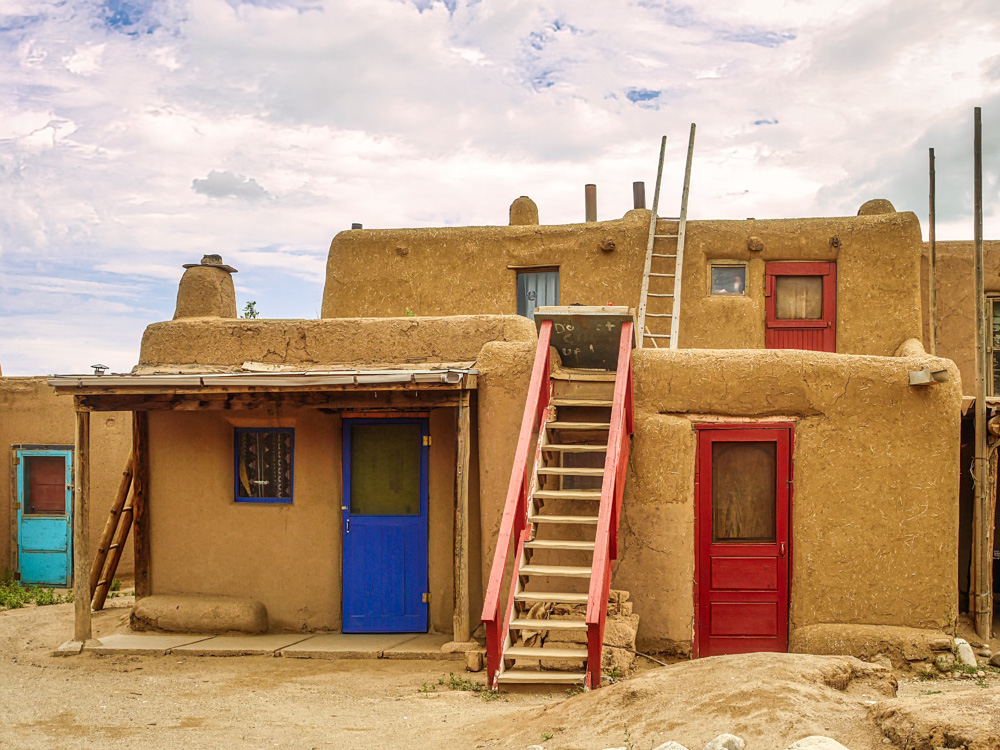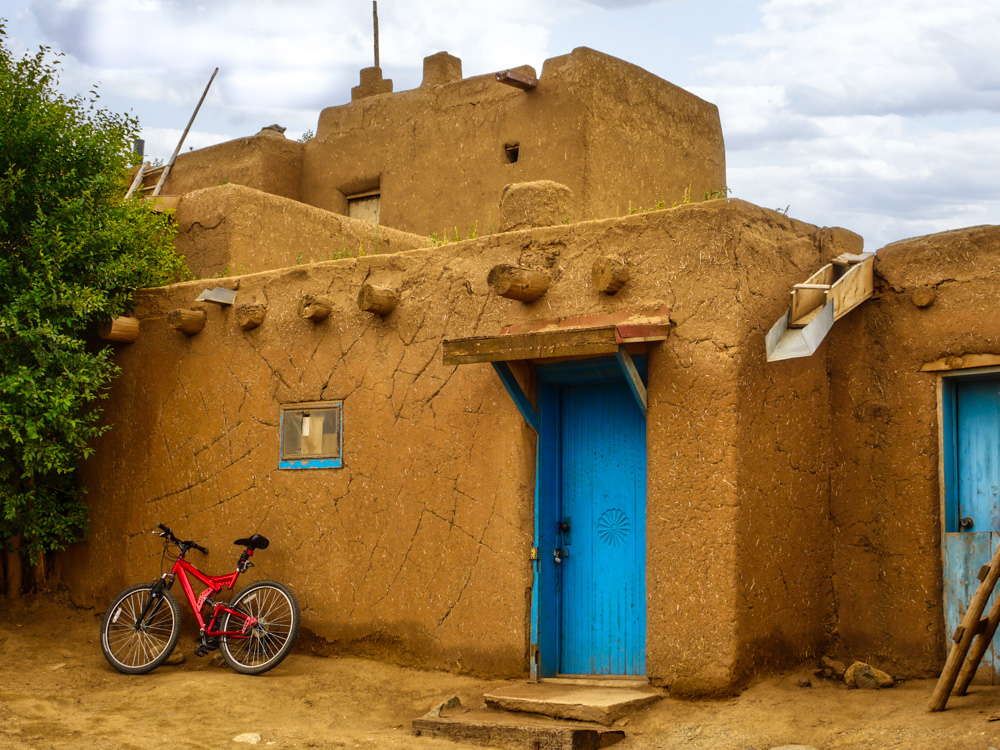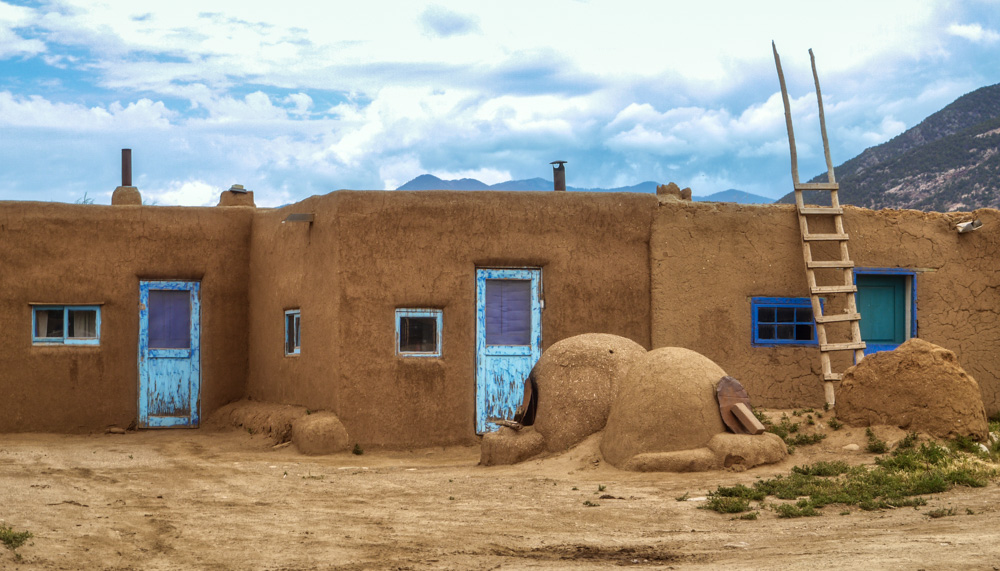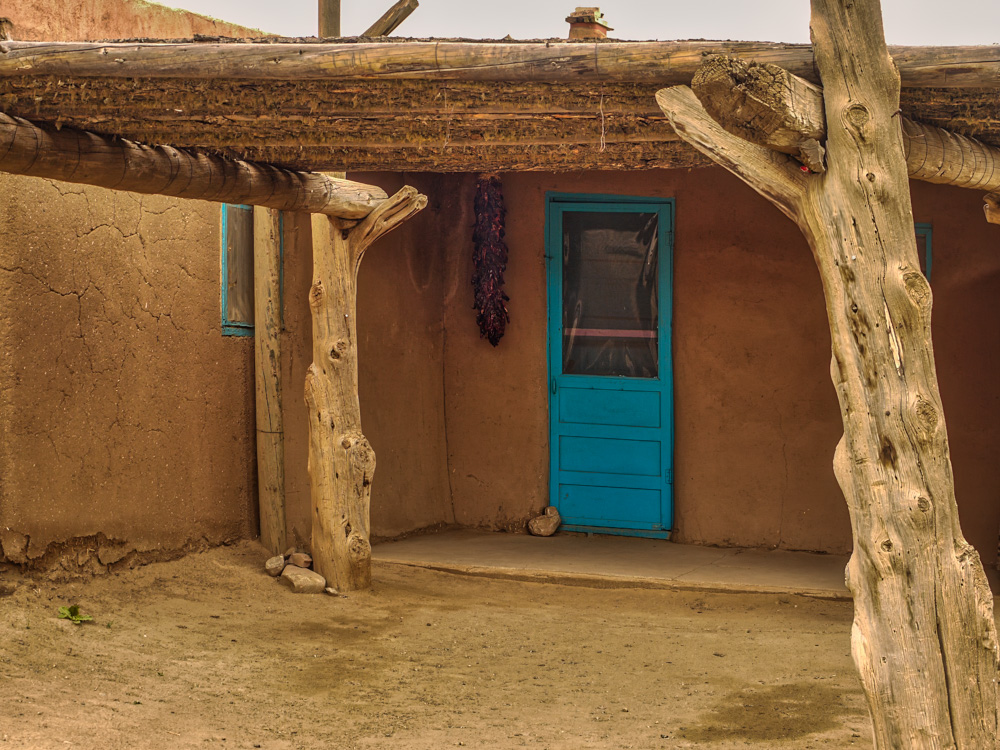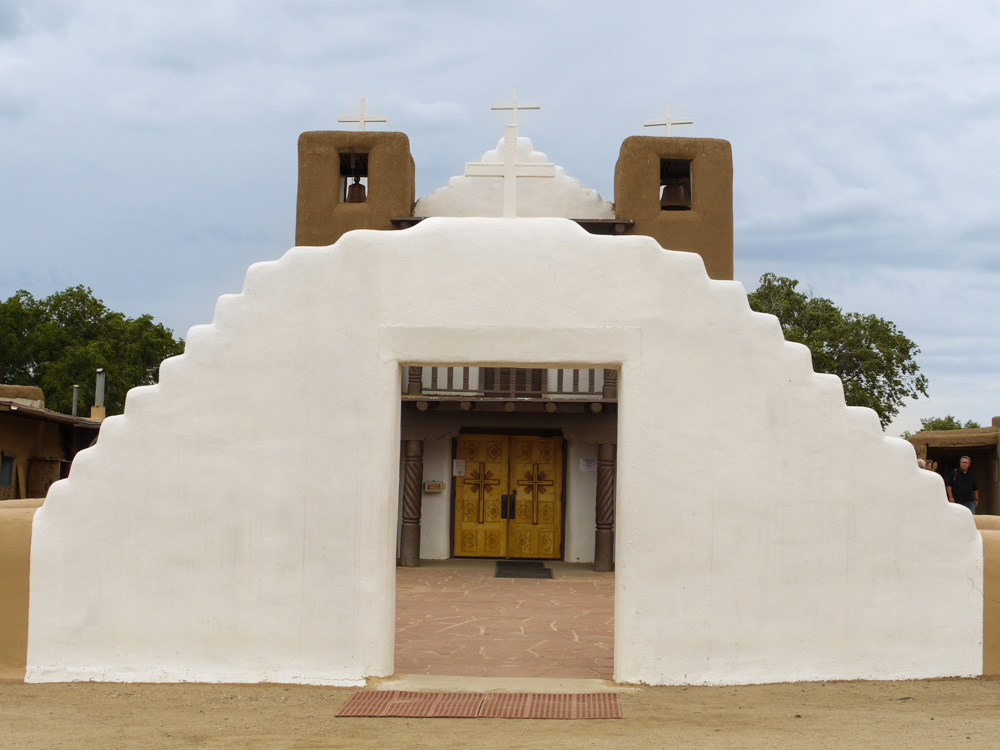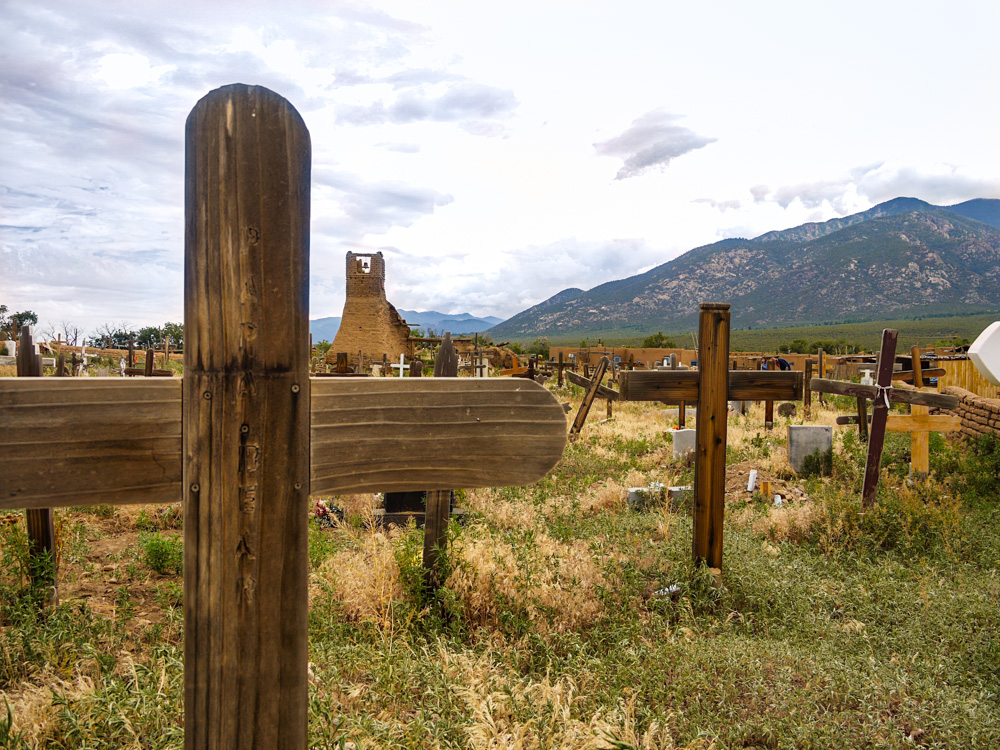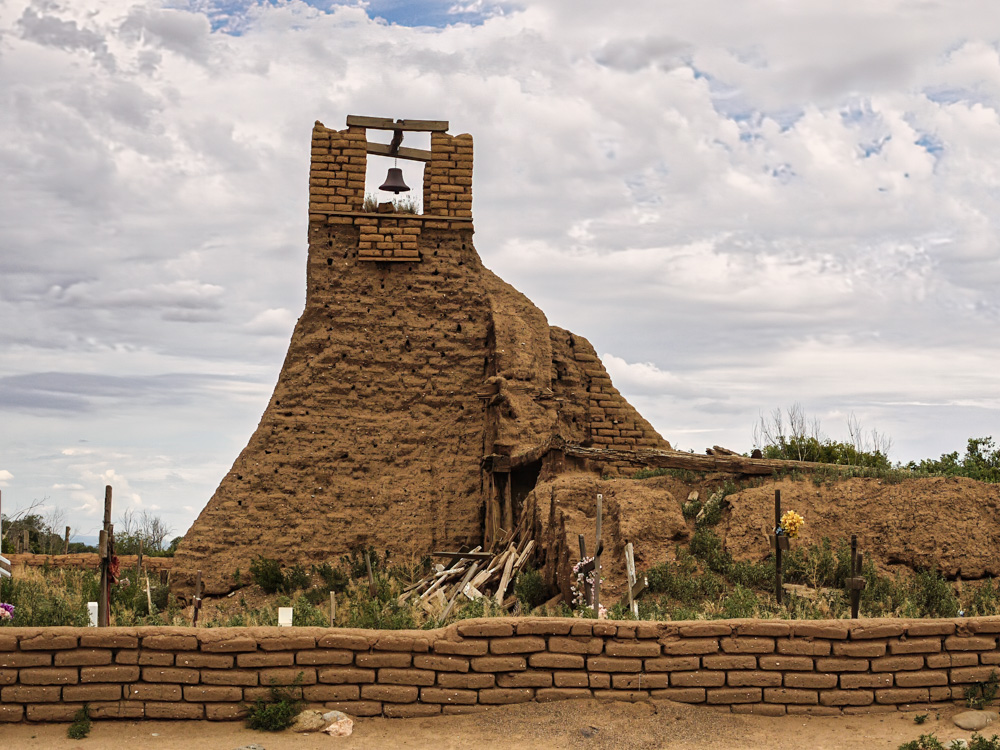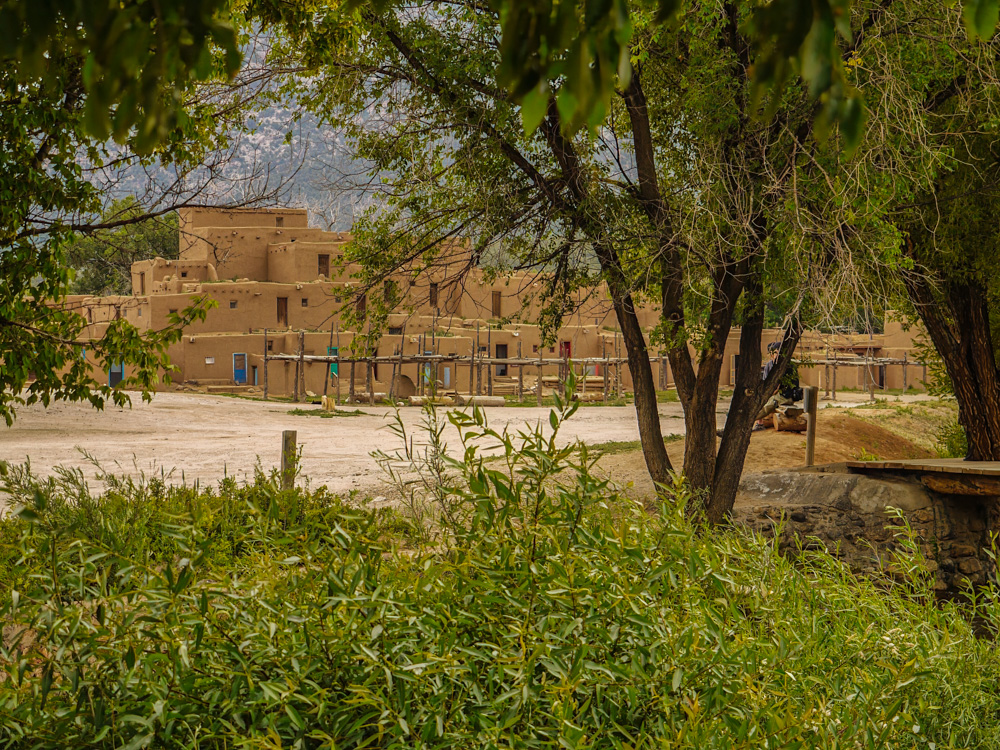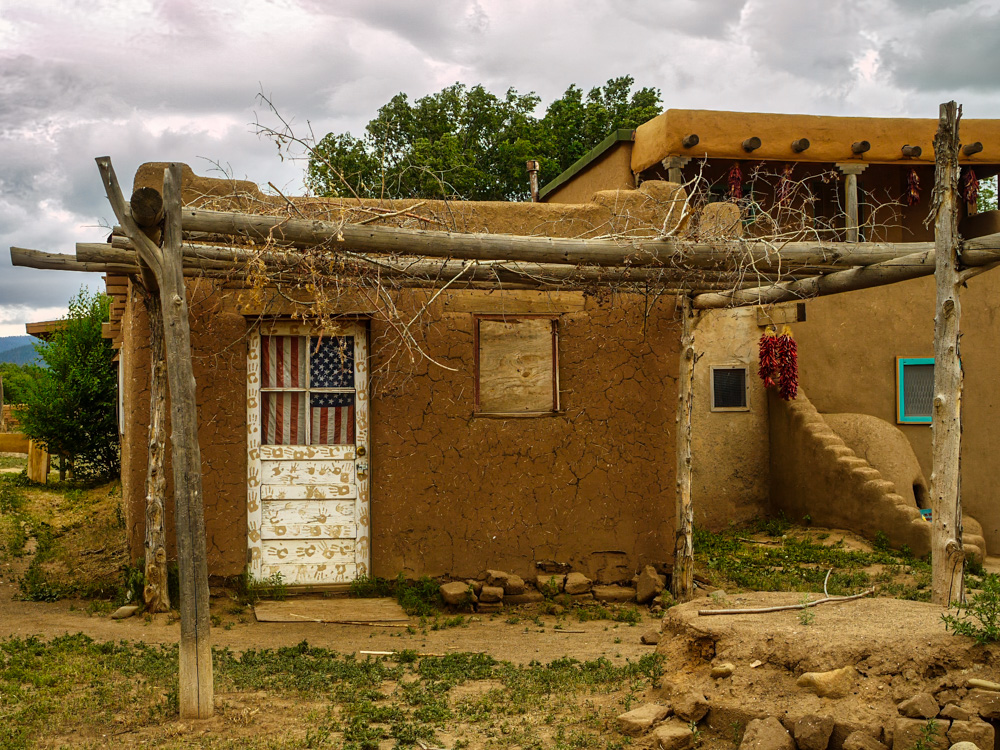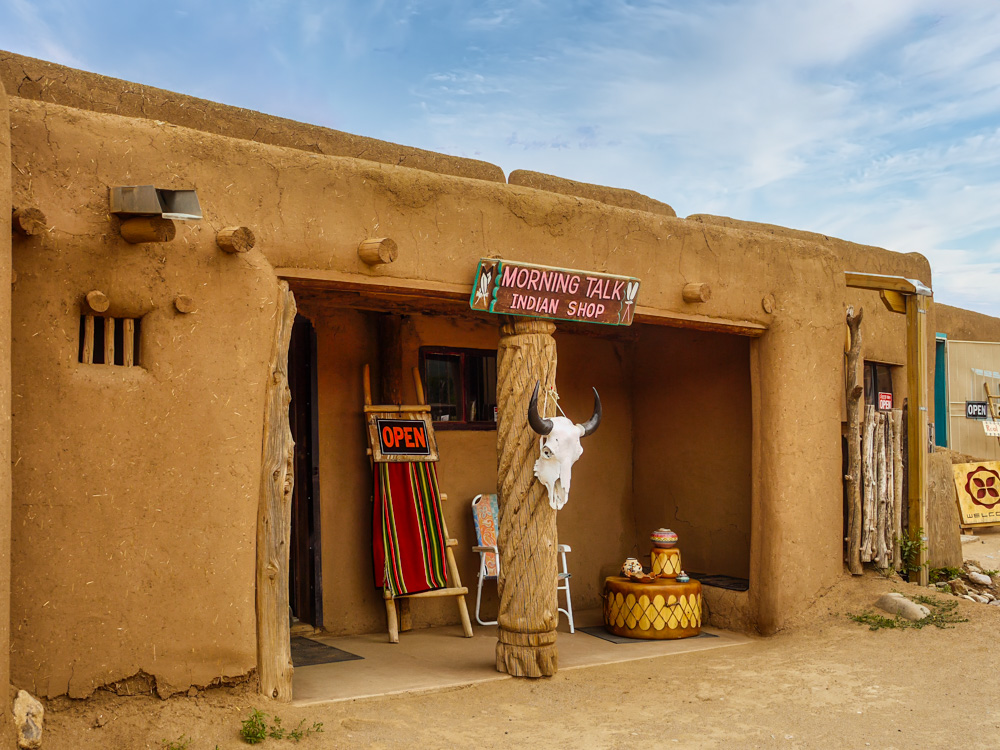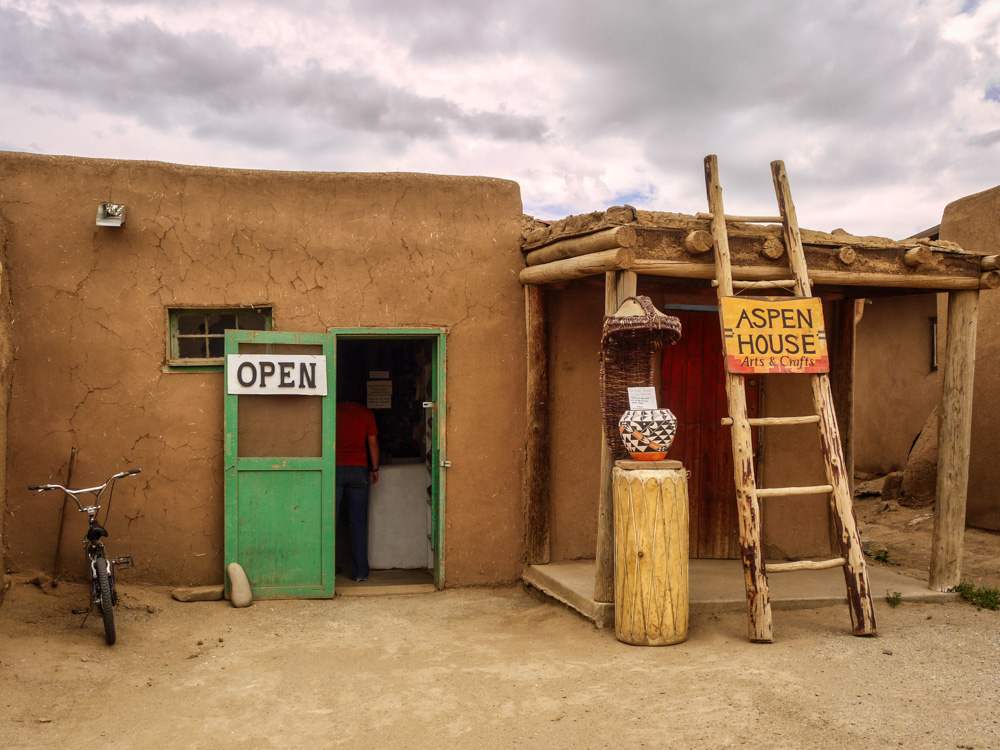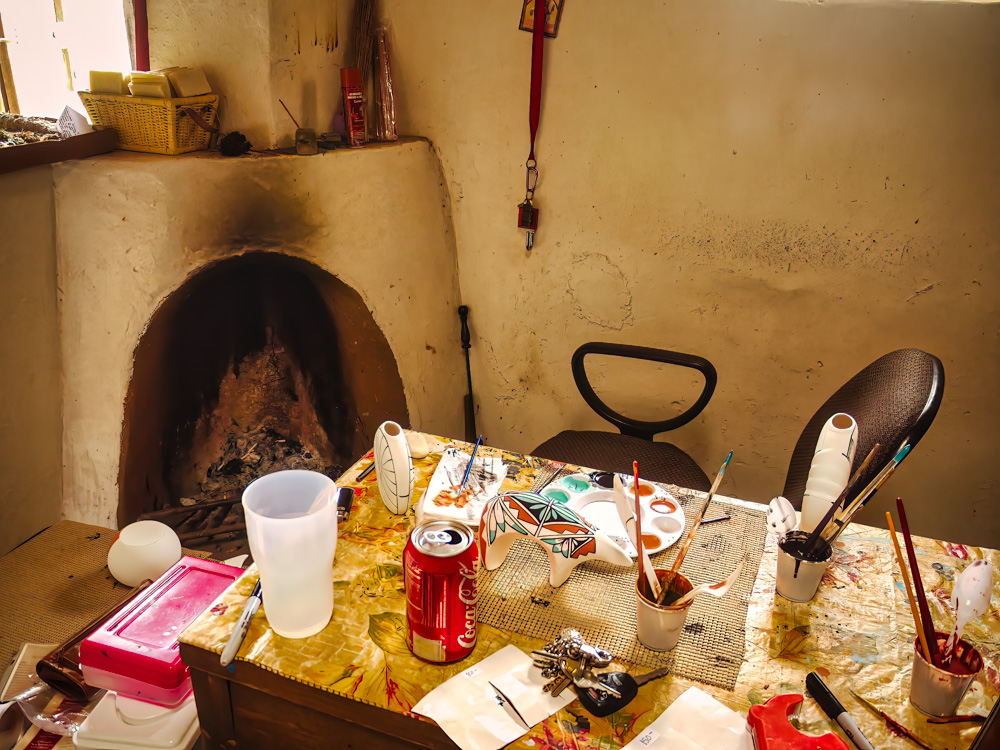Taos Pueblo
Taos Pueblo is a National Historic Landmark and a World Heritage Site. According to the Taos Pueblo website “the multi-storied adobe buildings have been continuously inhabited for over 1000 years.” You can read an interesting introduction to the site on the nps.gov Taos Pueblo website.
Although it was closed to the public for a while during the covid pandemic, it is now open again. These photographs were taken in June 2009. Click on any photo for a larger view.
The buildings are made of adobe. Adobe is dried mud brick, traditionally made from compacted sand, clay, and straw (or grass), mixed with water, and baked in the sun. I love the contrast colors they use against the adobe… blue and red being the most popular colors.
In the cemetery is the old ruined church.
And of course there are little shops selling handmade goods.
“The adobe homes, ceremonial kivas, archeological remains, and the ruins of an original Spanish-Era Mission (San Geronimo de Taos) and its ca. 1850 replacement reflect this coming together of American Indian and Spanish culture. Because Taos Pueblo is so significant, it is not only a National Historic Landmark, but it is also a World Heritage Site – one of only 21 such sites in the United States.
“Of traditional adobe construction, the pueblo consists of two clusters of sun-dried mud brick houses, with walls from 70cm thick at the bottom to about 35cm at the top. The community still refinishes the walls with a new coat of adobe plaster each year as part of a village ceremony. The two main adobe buildings flank the river and retain their traditional layout. The Taos Tribe considers Hlauuma (the northern house) and Hlaukwima (the southern house) to be a sacred part of the community’s heritage. The Taos Tribal Council, which owns the pueblo, does not allow modern amenities such as running water and electricity within the ancient pueblo’s walls. The tribe continues to use the pueblo for sacred ceremonies.”
—https://www.taospueblo.org/taos-pueblo
